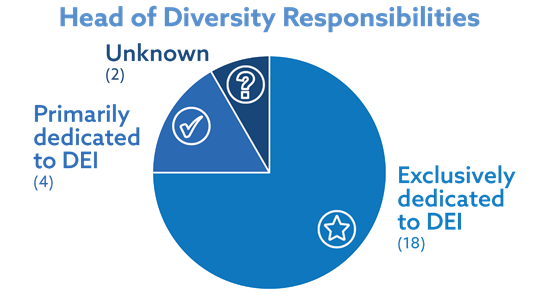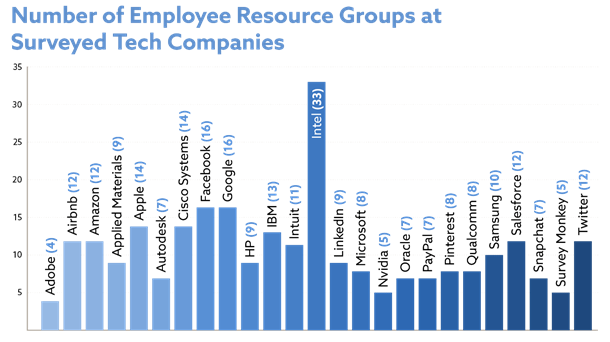Michael Delikat is Partner, Tierra D. Piens is Managing Associate, and Rudi-Ann Miller is a Summer Associate at Orrick, Herrington & Sutcliffe LLP. This post is based on their Orrick memorandum. Related research from the Program on Corporate Governance includes The Illusory Promise of Stakeholder Governance by Lucian A. Bebchuk and Roberto Tallarita (discussed on the Forum here); For Whom Corporate Leaders Bargain by Lucian A. Bebchuk, Kobi Kastiel, and Roberto Tallarita (discussed on the Forum here); Socially Responsible Firms by Alan Ferrell, Hao Liang, and Luc Renneboog (discussed on the Forum here); and Restoration: The Role Stakeholder Governance Must Play in Recreating a Fair and Sustainable American Economy—A Reply to Professor Rock by Leo E. Strine, Jr. (discussed on the Forum here).
In the wake of the Black Lives Matter Movement of 2020 and the resulting national conversation on race and equity, many companies have taken meaningful steps to achieve greater diversity, equity, and inclusion (DEI) in their respective workplaces. The technology industry, in particular, has made several notable strides towards these laudable goals.
We analyzed publicly available DEI information from 25 of the top tech companies [1] in the United States and found several approaches to driving holistic and lasting change in workplaces across all industries. We have highlighted the best practices we have seen as advisors to many companies looking to make progress in DEI while, at the same time, taking steps to minimize legal issues that can arise from some initiatives. These best practices include hiring a Global Head of Diversity, implementing a diverse slate hiring protocol, and creating and supporting employee resource groups (ERGs).
Best Practice 1: Hire a Global Head of Diversity
We canvassed public records and confirmed that 23 of the 25 leading tech companies now have a Global Head of Diversity role—also designated in some companies as the Chief Diversity Officer or Diversity Director. For many companies, hiring a Global Head of Diversity is a helpful tool in the arsenal of DEI strategies. Heads of Diversity lay the foundation for internal and external DEI initiatives, including defining and measuring success, allocating resources, securing partnerships, and pushing the DEI agenda forward. The existence of such a role also sends an important message to current and prospective employees, clients, shareholders, and investors about the company’s values.

While the job responsibilities for the Global Head of Diversity role differ across the 25 companies surveyed, there are a number of important similarities. First, the person in the Global Head of Diversity role typically does not have responsibilities outside of their DEI work. Second, the role is generally housed outside of the human resources department. And finally, the Global Head of Diversity is typically a senior-level role that is relatively high on the organizational chart. In most cases, the Global Head of Diversity reports directly to a member of the C-Suite, such as the COO or CEO. We recommend a high reporting level as it sets the right “tone at the top” for companies looking to make meaningful progress on DEI.

Best Practice 2: Diverse Slate Protocol
Under a diverse slate approach, hiring managers are required to verify that a diverse slate of candidates was interviewed before a job offer is made. For example, a company with an underrepresentation of women workers may require that at least one qualified female applicate is interviewed before an offer is made. The NFL popularized this approach to hiring in 2003 with the adoption of the Rooney Rule [2] and, based on our research, 10 of the 25 leading tech companies have publicly announced that they use a diverse slate approach in hiring. For instance, PayPal became one of the first in-house legal departments to implement the Mansfield Rule, “which requires candidate slates that are at least 50% composed of lawyers from historically underrepresented groups for at least 70% of all new U.S. legal roles and matters.” [3] Diverse slate protocols help minimize discrimination and unconscious bias in hiring and promotions while increasing the probability of achieving diversity targets.
Companies should set criteria for approving exceptions to a diverse slate, such as if the role at issue is particularly time-sensitive and business-critical and the candidate identified is exceptionally qualified for the position.
Best Practice 3: Establish Employee Resource Groups (ERGs)
Employee Resource Groups (ERGs)—also known as business resource groups, employee networks, team member networks, or affinity groups—are a significant part of an organization’s DEI strategy because they foster a diverse and inclusive workplace in a holistic, community-based way. Our study confirmed that all 25 leading tech companies have at least one and as many as 33 ERGs. The groups range in mission, meeting frequency, and type of sponsored activities, but, generally, ERGs are spaces for employees to celebrate their identity, receive support and advice, and create programming that shares aspects of their identity with the broader workplace.

In their most basic form, ERGs are employee identity-based groups that are recognized by company leadership. ERGs can be formed bottom-up by employees or organized top-down by the company. The first-ever ERG was created at Xerox by then-CEO Joseph Wilson in the aftermath of the 1964 race riots in Rochester, NY. [4] Since then, ERGs have grown both in number and popularity. Although the earliest groups were organized around racial identities, a growing number of companies have established additional groups based on demographics such as gender, sexuality, and common experiences, such as prior military service.
A recent trend in ERG formation has seen these groups expand their roles within their companies. ERGs of the past were simply a forum for various employee populations to connect with one another and feel connected to the company. Now, ERGs have started to push for greater responsibility in their companies and have aligned their goals with business objectives in a desire to prove that these groups and their members are business assets.
ERGs have demonstrated value, particularly in the areas of recruitment and retention, employee development, and product development and external marketing. ERGs often engage in formal and informal recruiting that attracts diverse candidates. ERGs also bolster employee retention efforts because employees are more likely to stay with a company if they feel a sense of belonging and community. ERGs also help company leadership understand the needs of diverse staff members. ERGs are often a key vehicle for facilitating formal mentorship, sponsorship, and professional development programs. ERGs can also be an asset in business decisions as they help companies understand diverse customer bases and make more inclusive products and services. For example, it was the McDonald’s women’s ERG that persuaded the company to add salads, fruit smoothies, and other lighter fare to franchise menus to attract female customers.
Best Practice 4: Support ERG Leaders
To thrive, ERGs must have consistent management support. ERGs should be formally recognized by the company and sponsored by at least one senior executive to ensure visibility and support from the top. ERGs efforts should also not be stymied by mid-level managers who may resist allowing their team members to divert some time to ERG work. Senior executives can prevent this by communicating the value of ERGs to all employees by providing financial or non-financial rewards and recognition for ERG work. ERG volunteers should also have their work noted positively in performance reviews and considerations for promotions and bonuses.
Budgets for ERGs must also be sufficient to support their activities. The most common sources of ERG funding are DEI and HR departments, with support ranging widely. Although the average budget is roughly $7,203 per 100 ERG members, some companies spend nothing while others spend as much as $37,000 per 100. [5] Organizations should determine the most feasible level of support for their ERGs but must also ensure that this financial support realistically approximates the vision the company has for these groups and amply matches the value they provide.
Conclusion
The tech industry’s embrace of DEI is synergistic because both tech and DEI leaders challenge the status quo and aim to be on the forward edge of knowledge and progress toward creating a world in which we want to live. By establishing a Global Head of Diversity position, creating and supporting employee resource groups, and implementing a diverse slate protocol, companies create low legal risk opportunities for DEI leadership, strategizing, and value messaging at multiple levels of an organization. These strategies are particularly key in the area of inclusion and, if given the right resources, they can effectively reinforce one another.
Endnotes
1The 25 companies canvassed were Adobe, Airbnb, Amazon, Applied Materials, Apple, Autodesk, Cisco Systems, Facebook, Google, HP, IBM, Intuit, Intel, LinkedIn, Microsoft, Nvidia, Oracle, PayPal, Pinterest, Qualcomm, Samsung Electronics, Salesforce, Snapchat, SurveyMonkey, and Twitter.(go back)
2Press release, NFL, NFL expands Rooney Rule requirements to strengthen diversity (Dec. 12, 2018) https://nflcommunications.com/Pages/NFL-EXPANDS-ROONEY-RULE-REQUIREMENTS-TO-STRENGTHEN-DIVERSITY.aspx.(go back)
3PayPal, 2019 Global Impact Report (April 2020), https://www.paypalobjects.com/marketing/web/us/globalimpact/PayPal_2019_Global_Impact_Report_FINAL.pdf.(go back)
4Exploring the History and Evolution of Employee Resource Groups, DiversityInc (Aug. 4, 2020), https://www.diversityinc.com/history-and-evolution-of-employee-resource-groups-ergs/.(go back)
5Mercer’s Global Equality, Diversity, and Inclusion Practice, ERGs Come of Age: The Evolution of Employee Resource Groups, (January 2011), at 6.(go back)
 Print
Print